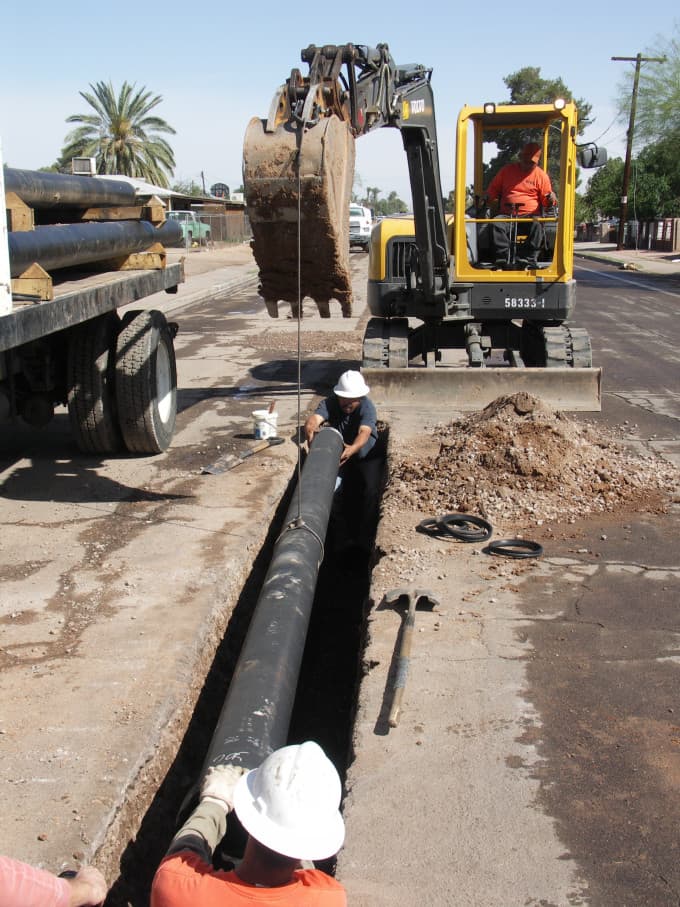AMWUA Blog
BY: Kathleen FerrisWater Rates Rising: Is Anyone Really Surprised?

The cost of delivering clean water to your home or business is rising. So is the cost of treating and reusing wastewater. The increase may already be reflected in your water bill, or soon will be. There are a few things you should know about where that additional money is going - and where it is not going.
A lot goes into the water and wastewater services that your city provides . The biggest costs are infrastructure – including pipes, pumps, wells, and treatment plants – and the energy needed to deliver drinking water and remove wastewater.
Infrastructure: It takes money to expand, maintain or replace the treatment plants, pumps and pipes that deliver drinking water and remove, treat and recycle wastewater. For example, we think of Phoenix as a relatively new big city, but the city has been operating a water system for more than 100 years. Some of its 7,000 miles of drinking water pipes and 5,000 miles of sewage pipes are deteriorating. Every leak or break in an aging system means wasted water and possible disruptions to service. Funding the repairs, upgrades and expansion that ensure reliable service accounts for a significant portion your bill. Phoenix Water, for example, spends 60 percent of its annual budget on capital infrastructure.
Energy: An enormous amount of energy is required to move and treat water and wastewater. Electricity costs are a substantial portion of a water agency’s operating expenses. For example, the cost of power is approximately 21 percent of the city of Scottsdale Water Department’s total operating budget. Increases in energy costs directly affect the cost of providing water.
Your city’s water department invests in water management strategies such as conservation programs, storing water underground, and other projects to stretch supplies and to increase the long-term reliability of supplies. In addition to delivering water to homes and businesses 24/7, water departments also provide services such as water for fire protection, water quality monitoring and testing, groundwater cleanup and replenishment, and ongoing planning to meet future water needs. These costs are also reflected in your bill.
The good news? City water departments, like most successful businesses, are always looking for new technology and procedures to decrease the cost of daily management and operations. Many of these efforts include partnerships to buy bulk supplies, installing more efficient machinery and lowering energy costs. Here are a few examples.

- City of Mesa: The city is replacing inefficient pumps that keep its water delivery system perpetually full. The new replacement pumps operate based entirely on water demand. When demand is low, the new pumps slow down and use less energy. When demand is high, they automatically ramp up to refill the system to capacity and meet the need. The city also uses methane gas produced during the wastewater treatment process to fuel a generator at the treatment plant. The generator is used to reduce the amount of electricity required at peak times during the day when electricity is most expensive.
- City of Phoenix: In the past year, the city has installed high-efficiency LED lighting at treatment facilities, upgraded the HVAC system in the water department’s administrative building and replaced large pumps at a treatment plant with smaller, more energy-efficient pumps. The city also changed the way it disinfects and filters drinking water, which improved water quality and helped new filters last longer.
- City of Scottsdale: As a whole, chemical costs used in treatment plants increased over 60 percent in one year. The city responded by making a change to its wastewater treatment plant that allowed it to replace a high cost, hard-to-get chemical with a less costly more readily available chemical. That change saved it $500,000 in operating costs this past fiscal year.
Even with upcoming rate increases, the average single-family residential customer in the city of Phoenix will pay $30 a month for water. Water is still a bargain and cities are working to keep it that way.
For 46 years, Arizona Municipal Water Users Association has worked to protect our member cities’ ability to provide assured, safe and sustainable water supplies to their communities. For more water information visit www.amwua.org .
